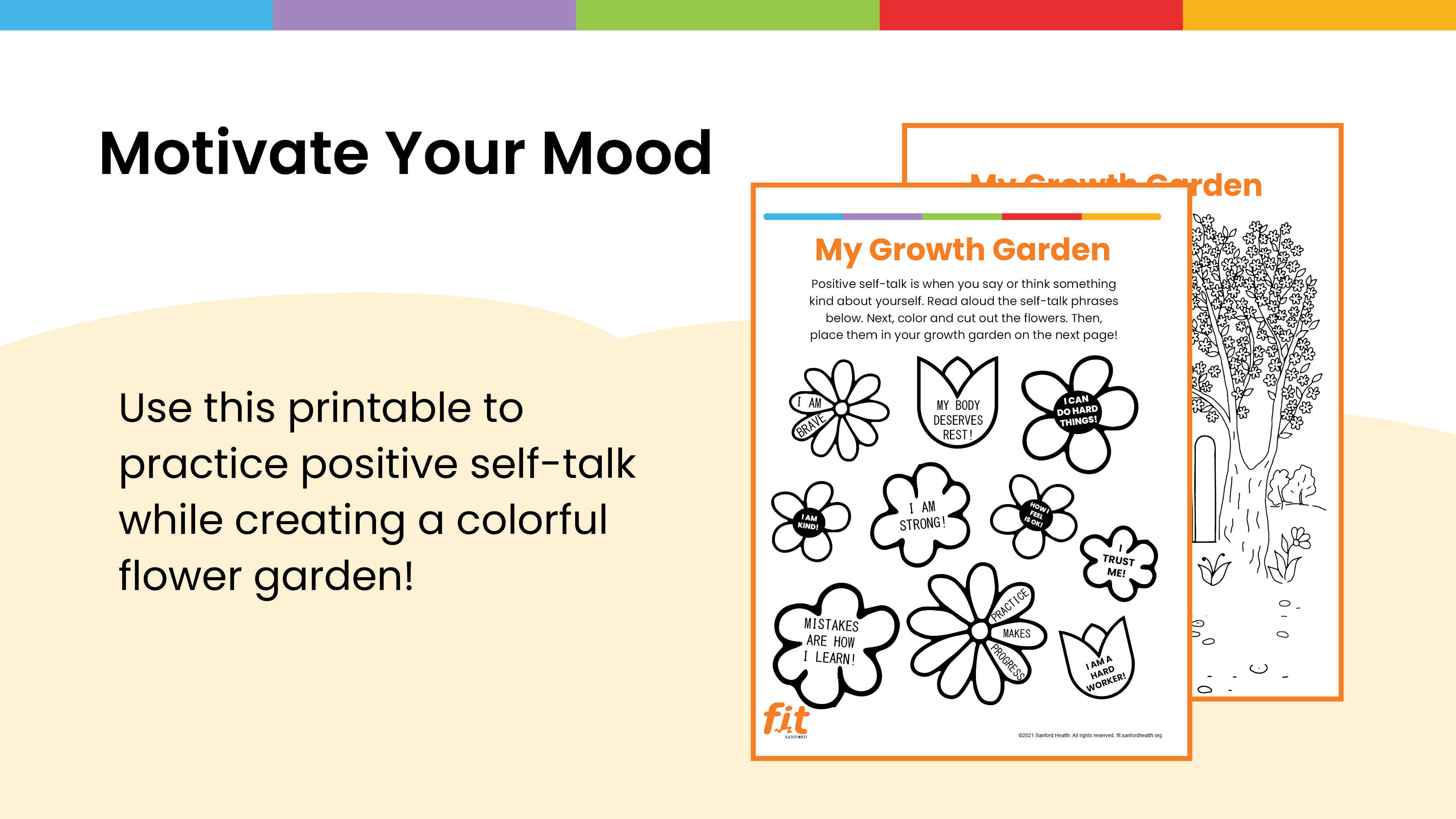Objectives
- Describe how to use positive self-talk to motivate your mood (e.g., choose to recharge energy, get active, do something fun, and/or do something with a friend).
Info to Know
This unit helps kids understand that feelings and emotions put them in a mood, and their mood influences their choices. The lessons in this unit will build awareness of what it means to “motivate your mood.” Download the Positivity Posters and Positive Self-Talk Coloring Pages to help your students understand the power of positive self-talk and choices they can make to motivate their mood, such as recharging their energy, getting active, doing a fun activity, or doing something with a friend.
Set The Stage
Ask, “What is one thing you don’t like to do?” Have kids turn and talk to a partner to share their dislike. Revisit at the end of the lesson to have kids rework this dislike with how they could change their view on this.
To use this with your students click here.
Captivate
How Can Kids Motivate Their Mood?
View the slideshow for examples of kids turning an “I won’t” mood into an “I will” mood. Draw students’ attention to the choices each kid can make:
- Anna can stay upset or decide to motivate her mood and do something like dance to music.
- Liam can stay sad or relax with a book.
- Gemma can stay bored or play outside.
Educate
Teach Kids to Self-Talk
Key points:
- Negative self-talk, like “I can’t," or “it’s too hard," or “I don’t want to,” are examples of thoughts that make it hard for you to do things that are good for your body and brain. Positive self-talk, like "I will try my best," or "I can do hard things," or "I believe in me," help you to motivate your mood and make healthy choices.
- You can take charge of your mood and motivate yourself to make a fit choice.
Check for understanding: When might you use self-talk to motivate your mood?
Activate
Help Kids Turn Their Mood Around
Ask students to share some positive self-talk phrases they can use to motivate their mood. Remember, there is no right or wrong answer, as long as you're kind to yourself!
Students create a colorful flower garden craft while practicing positive self-talk with the My Growth Garden printable.
Close the Lesson
Today we learned about using positive self-talk to motivate your mood. Next we will learn about the many choices you can make when you decide to motivate your mood.
Grade: 3-5
Time: 20 Minutes
What You'll Need
Resources
- Self-Talk is Healthy for You - Slideshow
- Positivity Posters - Printable
- Positive Self-Talk Coloring Pages - Printable
- Positive Self-Talk Coloring Pages (Español) - Printable
- My Growth Garden: A Positive Self-Talk Craft - Printable
Materials
- Slideshow
- Markers
- Poster Board or White Board
Health Education Standards
- Standard 1: Core Concepts–Use self-control and impulse-control strategies to promote health.
- Standard 2: Analyze Influences
- Standard 4: Interpersonal Communication
- Standard 5: Decision-Making
Social and Emotional Learning Competencies
- Self-Awareness
- Self-Management
- Responsible Decision-Making
Extend the Lesson
- Play the fitGame, Motivation Stations.
- Read Breathing Techniques to Inspire Mindfulness in Kids to learn how you can help your students relax and become more mindful of their feeling and emotions.
- Use the How I Feel Activity to Check-In on Feelings and Emotions to help kids explore how they feel and learn positive coping strategies.








